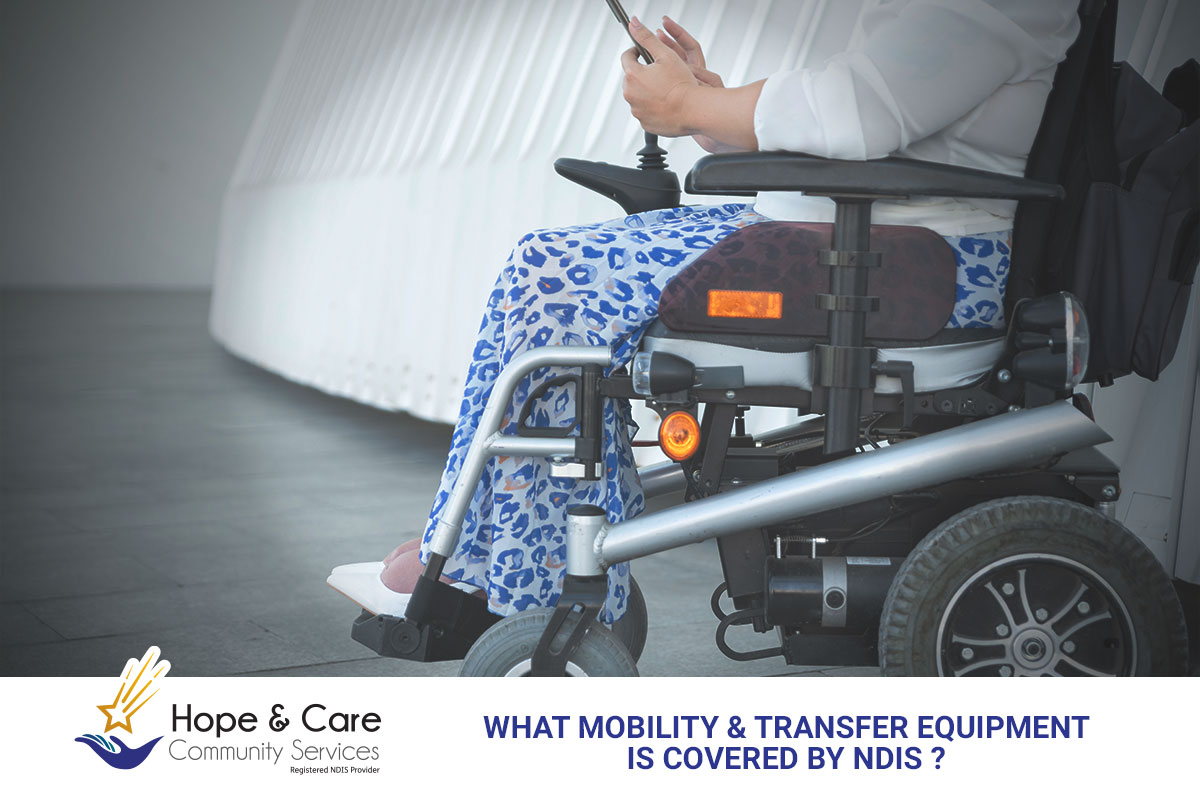
The National Disability Insurance Scheme (NDIS) supports Australians with disabilities by funding essential services and equipment to improve independence, mobility and overall quality of life. One key area of assistance includes mobility and transfer equipment, which helps individuals move safely and comfortably at home and in the community.
With the right mobility aids, people with disabilities can reduce physical strain, prevent injuries and gain greater independence in their daily routines. The NDIS funds a wide range of mobility equipment, ensuring participants receive the right support to move freely and confidently.
If you are an NDIS participant or a caregiver looking for mobility solutions, this guide will help you navigate the available options.
What is Mobility and Transfer Equipment?
Mobility and transfer equipment refers to assistive devices that help people with disabilities move safely and independently. These tools range from simple walking aids, such as crutches, to advanced home and vehicle modifications that improve accessibility.
For many NDIS participants, the right mobility equipment makes a significant difference in their ability to perform daily tasks, navigate their surroundings and participate in the community. By funding these supports, the NDIS helps individuals with disabilities lead more independent and fulfilling lives.
NDIS Mobility and Transfer Equipment Categories
The NDIS funds various mobility aids to help participants increase mobility, improve safety and enhance daily independence. Below are the main types of equipment covered:
Wheelchairs and Mobility Scooters
Wheelchairs and scooters provide essential support for people with limited or no ability to walk. Selecting the right option depends on physical ability, lifestyle and independence levels.
- Manual Wheelchairs – Best for individuals with upper body strength or those with caregiver assistance.
- Powered Wheelchairs – Include custom controls, adjustable seating and advanced manoeuvrability for people who need additional support.
- Mobility Scooters – Ideal for individuals who can sit upright but require assistance covering long distances. These scooters promote community engagement and outdoor activities.
Walking Aids
For those who can walk but need extra support, walking aids help improve balance and prevent falls.
- Crutches and Canes – Lightweight and easy to use for individuals with mild mobility issues.
- Walking Frames and Rollators – Provide more stability than canes and often include wheels, seats and storage compartments for added convenience.
Transfer Aids
Transfer aids assist individuals in moving safely between different surfaces or positions, reducing the risk of injury. These tools are especially beneficial for people who require caregiver support.
- Transfer Benches and Boards – Help individuals move from a wheelchair to a bed, bathtub, or chair without straining their muscles.
- Hoists and Lifts – Support full-body transfers, such as moving from a bed to a wheelchair. Options include portable hoists and ceiling-mounted lifts.
- Slide Sheets – Reduce friction, making it easier for caregivers to reposition individuals in beds or chairs.
Prosthetics and Orthotics
For individuals with limb differences or musculoskeletal conditions, the NDIS funds prosthetic and orthotic devices to improve mobility, posture and function.
- Prosthetic Limbs – Custom-fitted to replace missing limbs, designed to match an individual’s physical needs and daily activities.
- Orthotic Devices – Include braces, splints and ankle-foot orthoses (AFOs) that provide additional support and stability.
Home Modifications for Accessibility
The NDIS funds home modifications to increase accessibility and safety, ensuring individuals can move around their homes without barriers.
- Ramps and Stair lifts – Help wheelchair users and individuals with mobility challenges navigate multi-level homes and entryways.
- Handrails and Grab Bars – Offer additional support in high-risk areas like bathrooms, hallways and staircases.
- Widened Doorways – Allow wheelchairs and mobility aids to move easily between rooms.
Vehicle Modifications for Independence
For individuals who need to travel independently, the NDIS funds vehicle modifications that improve accessibility and safety.
- Wheelchair Accessible Vehicles (WAVs) – Feature ramps, lifts and restraint systems, making it easier for wheelchair users to enter and exit.
- Adapted Driving Controls – Include hand controls, pedal extensions and joystick steering, allowing individuals with disabilities to drive safely.
How to Access NDIS-Funded Mobility and Transfer Equipment
To receive funding for mobility and transfer equipment, participants must follow these steps:
Get a Professional Assessment
A registered occupational therapist (OT) or physiotherapist assesses the participant’s mobility needs and recommends the appropriate equipment. The assessment ensures that the equipment aligns with physical abilities and daily activities.
Discuss Your Needs in Your NDIS Plan Meeting
During the NDIS planning meeting, participants discuss their mobility challenges and goals with their NDIS planner or Local Area Coordinator (LAC). The planner then determines whether the requested equipment qualifies for funding.
Obtain Quotes and Get Approval
For high-cost mobility aids, the NDIS may require participants to provide quotes from registered providers. The agency reviews the request to confirm that the equipment is reasonable and necessary.
Purchase and Set Up the Equipment
Once approved, the participant receives funding in their NDIS plan and can purchase the equipment through an NDIS-registered provider. In many cases, a specialist customises and fits the equipment to ensure optimal use.
Safety and Maintenance Tips for Mobility Equipment
To maximise the lifespan and effectiveness of mobility aids, participants should follow these best practices:
- Receive Professional Training – Learn how to operate and maintain mobility aids properly.
- Schedule Regular Maintenance – Inspect mobility equipment for wear and tear and arrange servicing when necessary.
- Follow a Manual Handling Plan – For complex equipment like hoists, follow a personalised handling plan to ensure safety. Read the NDIS Commission’s safety guide on hoist usage for more details. (NDIS Commission Safety Guide)
Conclusion
Mobility and transfer equipment plays a vital role in enhancing independence, safety and accessibility for individuals with disabilities. The NDIS funds a wide range of mobility aids, ensuring participants can move with confidence and ease.
At Hope & Care Community Services (HCCS), we are committed to helping NDIS participant’s access to improve their daily lives. Our team works closely with NDIS support coordinators, occupational therapists to ensure you receive the best solutions tailored to your needs. By choosing HCCS, you gain access to our guidance, quality support and personalised assistance in navigating the NDIS process. Let us help you achieve greater freedom, confidence and participation in your community.
Want to learn more? Read other articles :
- Redefine Independence your own way – with HCCS
- Who’s Who: The Key Terms of Your NDIS Plan
- Foundational Supports: Building Blocks of NDIS Success
HCCS is a registered NDIS provider. Learn more about our services.
♥ We are available in Brisbane! – Our team is just a call away!
